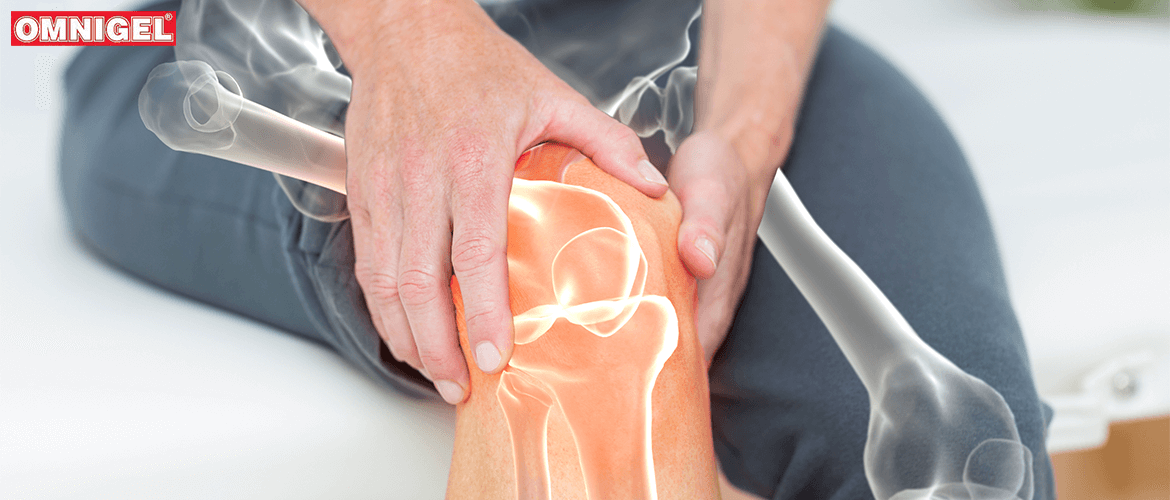Knee pain can make it hard for you to sit, walk, run, and go about your daily activities. Bending to pick up something or squatting can be excruciating for some. But what’s causing your knee pain? We help you get to the bottom of it all; plus a look at the best pain relief products and home remedies that work.
What Are The Causes Of Knee Pain?
Knee pain can be the result of some chronic ailment or might be a temporary condition brought on by an injury or accident. Here are some of the most common causes of knee pain.
Knee injury: If you’ve recently had a bad fall, been involved in an accident of some kind, or had a sports injury, you could have damaged the knee or the muscles and tendons surrounding it. Have it checked by a doctor to confirm. It could be due to a dislocated kneecap, torn ligament, tendon or cartilage damage, or a sprain.
Patellofemoral syndrome: Patellofemoral syndrome or runner’s/jumper’s knee can cause stiffness and pain in the front of the knee. While it is typically associated with injury from sports, some people with a kneecap alignment issue may also develop this issue.
Iliotibial band (IT-band) syndrome: Some people develop inflammation in the band of connective tissue that runs along the thigh down to the knee . This IT-band syndrome has been linked to knee pain.
Patellar tendonitis: Damage to the tendon that links your shinbone to your kneecap can result in patellar tendonitis . It is associated with knee pain, stiffness, and inflammation.
Osteoarthritis: One of the most common joint diseases, it can cause issues not only with the knee joint itself but also with the surrounding cartilage, ligaments, bone, and joint lining. It often affects the elderly but can begin in middle age . Osteoarthritis causes inflammation, swelling, and pain.
Rheumatoid arthritis: This chronic inflammatory condition is an autoimmune disease that can cause the cartilage surrounding the knee to be destroyed and brings on swelling and pain in the knee.
Septic arthritis/gout/bacterial joint inflammation: Knee joint infection can cause inflammation and pain in the area. The elderly and infants are more prone to this problem which occurs as a result of germs passing from different parts of the body, through the bloodstream, to the knee joint, ultimately infecting it . It is marked by the area becoming red and hot to the touch, accompanied by sudden attacks of very intense pain.
How To Manage Knee Pain: Simple Home Remedies
If you’ve suddenly developed knee pain or it is troubling you right now, there are some simple things you can do while you wait to see a doctor.
- Take the weight off the knee to reduce the load and strain on it.
- Rest your knee by sitting or lying down with the knee in a comfortable position.
- Apply an ice pack wrapped in a soft towel to the knee every 2-3 hours or so. Do not use it for more than 20 minutes at a time.
- Use a topical pain relief remedy. The best knee pain relief creams and sprays are sold over-the-counter and don’t require a prescription, so you should be able to get one quite easily.
- If the pain is bad, you could consider taking paracetamol.
Omnigel For Knee Pain
A tried and tested topical pain relief remedy, Omnigel can be applied to the area around your knee for almost immediate relief from the pain. This diclofenac gel reduces inflammation and swelling and gives you a breather from the discomfort of knee pain. It is known to help with easing stiffness so you can restore movement in the joint. Also sold as a spray, it is a great choice for topical pain relief for anyone struggling with knee pain. Omnigel will soon become your go-to remedy for all kinds of aches and pains!
Omnigel is available at online and offline pharmacies and offers a convenient solution to knee pain and other muscle and joint aches and pains.

